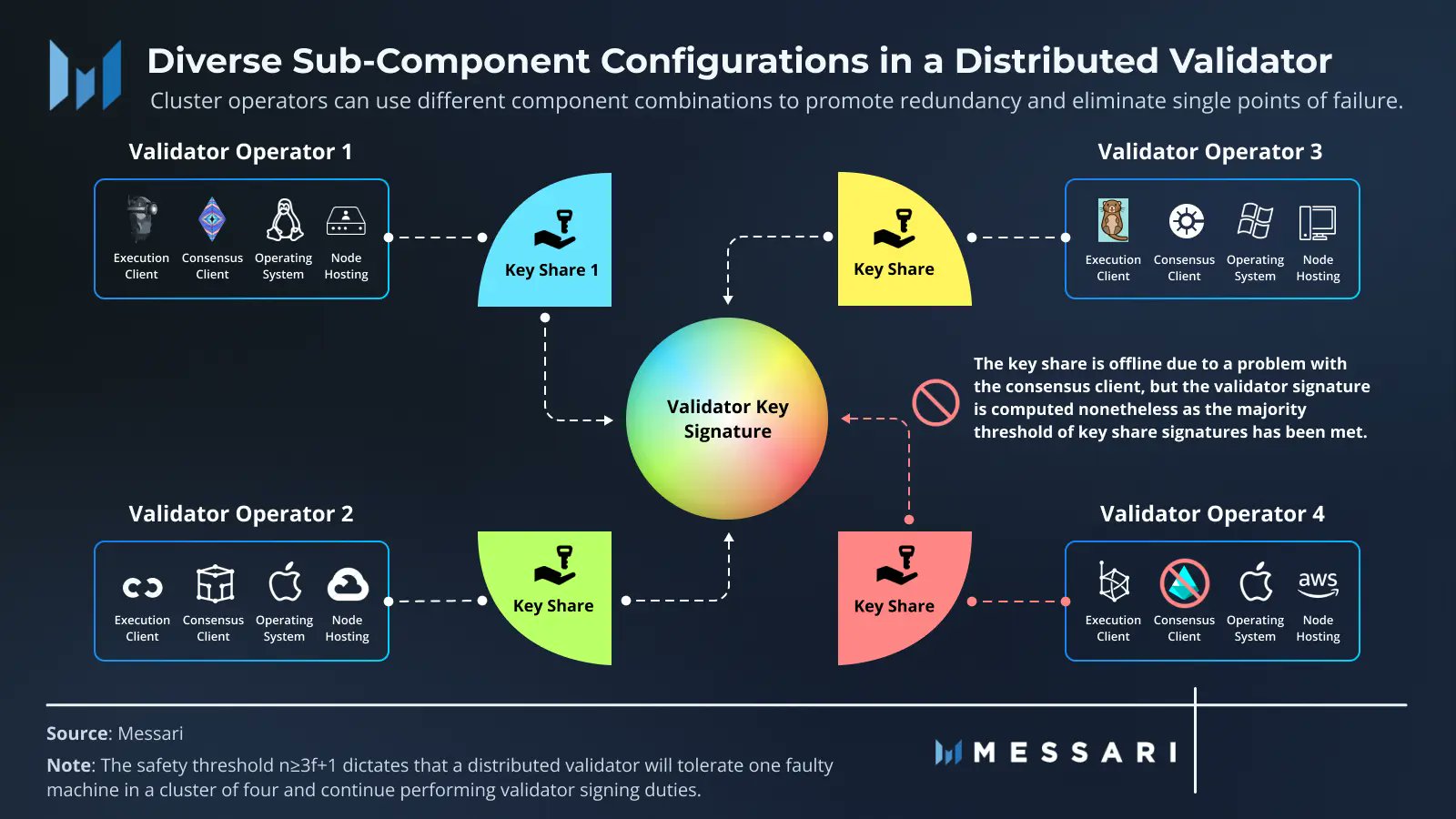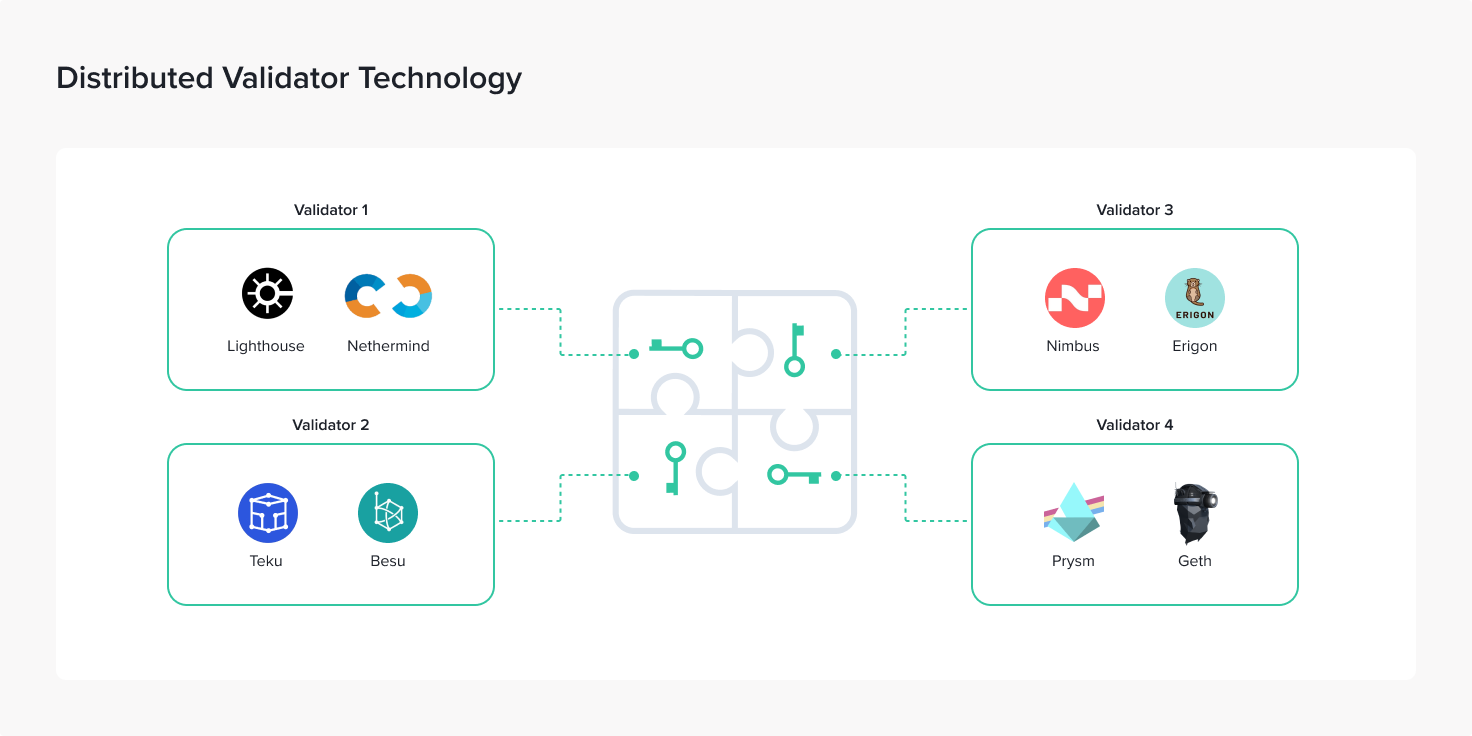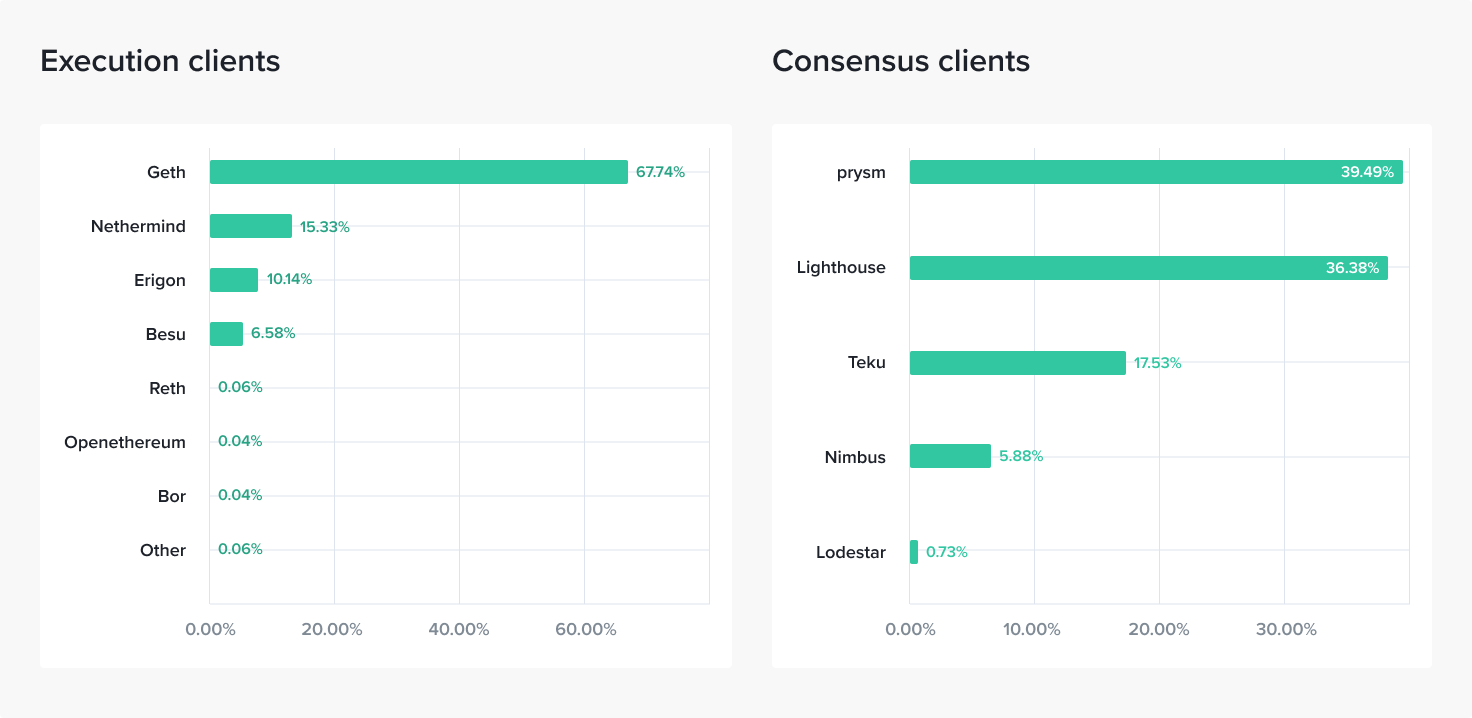What is DVT and how does it help decentralization?
With the move of the Ethereum network from Proof-of-Work to Proof-of-Stake following The Merge, it became possible for network participants to contribute to the secure running of the network as validators, and to get rewarded for doing so.
However, there are strict conditions that validators must fulfill in order to obtain the reward and avoid getting penalized. Not only do they have to put a large amount of Ether at stake, but they also need to meet the network’s availability and security requirements.
This is where DVT (Distributed Validator Technology) comes into play, making it easy for a group of participants to act together as a single validator. DVT effectively enables the decentralized running of validators, improves resiliency, and helps to reduce slashing risks.
Keep reading to understand how DVT works and what are the benefits of using it when running Ethereum validators.
How validators secure the network
Before we explain the benefits of distributed validator technology, let’s look at how validators contribute to the running of the Ethereum network.
What are validators?
Validators are computer programs that participate in Proof-of-Stake networks and have the responsibility of verifying the new blocks that get added to the blockchain, thus defending against attempts to manipulate the network. In exchange for validating (or signing) new blocks, validators receive a reward in the native token of the blockchain they are securing. A second function of validators is to propose new blocks to be added to the ledger when they are randomly selected from the validator pool. If validators misbehave, such as by double-signing transactions, or by going offline, they get penalized and can lose a part of, or sometimes their entire stake. This is known as “slashing.”
Validators vs nodes
To clear out any confusion, it’s worth noting that the designations “staking validator,” “staking node,” and “validator node” are often used interchangeably. In short, a staking validator is a special type of node in a distributed network, which has the ability to participate in consensus by validating new blocks.
What is DVT?
Distributed validator technology is a type of middleware that enables Ethereum staking validator operations to be performed in a decentralized manner, between several parties, on multiple machines.

How DVT works. Diagram via Messari Twitter
This is achieved by facilitating the secure management of validator key shards and is enabled by a combination of MPC (multi-party computation), threshold encryption (a technique that allows operators to collaborate without revealing each other’s key fragments), and other secret sharing mechanisms.
With DVT, each participant owns a shard (or part) of the validator key, which they must use collectively to perform validator actions.
Challenges to validator key management
To understand why DVT is useful, one must understand what makes validator key management a complicated undertaking. Validator keys are used to certify (or sign) the messages sent by the validators and need to be handled securely at all times. While they don’t provide access to the staked assets, the loss of validator keys to an attacker can still result in the loss of funds through slashing. On the other hand, validator keys need to be constantly accessible in order for the validator to sign new blocks and respond to the network’s availability requirements.
Because validator keys need to be both accessible and tightly guarded, it’s imperative that all operations that involve validator keys are performed while fulfilling strict security requirements.
Becoming an Ethereum validator
As the role of a validator is to keep the network secure, running them is a big responsibility. Validators answer for their own staked tokens as well as, in many cases, the tokens that were delegated to them by other network participants (stakers).
Running a validator necessitates blockchain technology expertise, as well as system administration experience, and a robust hardware stack. Additionally, a minimum amount of native tokens must be put “at stake” in order to activate a validator. This amount differs for every network – in the case of Ethereum, the required stake is 32 ETH.
For a validator to be as secure as possible, several conditions must be met:
- The operator must be able to ensure high availability (validator uptime);
- The operator should make use of infrastructure that protects the validator’s signing keys in order to mitigate malicious attacks;
- Besides having a reliable monitoring system, 24/7 on-call availability need to be ensured in order to provide adequate incident response.
How DVT helps decentralization on Ethereum
As you can see, the technical barrier to running a validator is high. Coupled with the high cost of activating a validator (approximately $50,000 as of March 2023), it makes running an Ethereum validator a risky endeavor for solo stakers, since any mistake can result in a significant loss of funds. Events that lead to the slashing of validator funds do not necessarily have to demonstrate malicious intent, and in fact, the most common mistake of a validator is going offline. This convergence of factors can lead to increased centralization in the Ethereum network by effectively lowering the participation rate of non-professional validator operators.

DVT makes it possible for Validator Operators running different execution and consensus clients to work collaboratively.
In this context, DVT is an important component for decentralizing the Ethereum ecosystem because it removes single points of failure by enabling multiple parties to pool financial and computational resources and run validators. What's more, DVT can also help improve Ethereum client diversity as it allows operators to run a node together, regardless of the consensus and execution clients that they are running.
By allowing validators to run securely on multiple machines, DVT improves their fault tolerance and decreases the risk of slashing penalties due to validator downtime. With DVT, even if one machine is offline, the validator can continue performing its duties and reap the rewards for the work it puts into supporting and securing the network.

Ethereum client diversity. Snapshot as of 20 March 2023.
But DVT is not only beneficial for solo stakers – it also allows liquid staking protocols and institutional staking providers to improve the effectiveness of their redundancy set-ups and mitigate risks, albeit in exchange for higher operating costs. Finoa, for example, is championing distributed validator technology for its institutional-grade validator services, having already partnered with other operators to deploy a decentralized staking validator using Obol DVT technology.
Closing thoughts
DVT reduces potential network failures and makes the decentralized running of Ethereum validators possible, mitigating some of the risks associated with validator availability errors.
Besides improving fault tolerance, DVT is a piece of the puzzle that contributes to the decentralization of the Ethereum network. It allows professional validators, as well as solo staker communities, to run validators more effectively and provides benefits that increase validator security and efficiency.